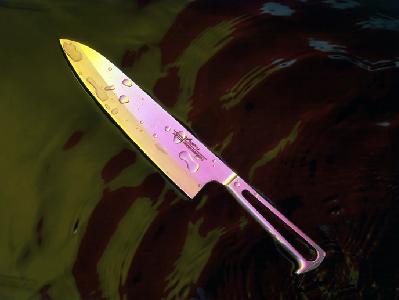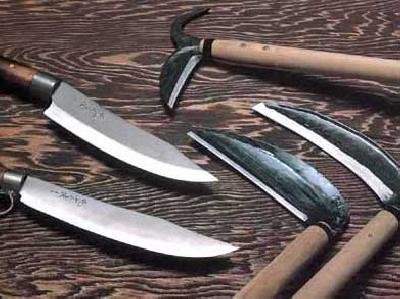|
Takefu Knife Village is a brand created in 1982 by local curter artisans in Takefu, the biggest cutlery producing district that proudly maintains over seven hundred years of history.
In 1983 with the collaboration of Kazuo Kawasaki, a design director who was born and raised locally, Takefu launched its new series of kitchen knives, ARTUS.
While using the traditional method to create the blade part and by utilizing a unique design to unify from the tip of the blade to the handle, it achieved a simple yet innovative, hygienic and highly aesthetic product.
ATRUS is made by “fire casting”, a traditional craftsman’s striking technique, which uses a three-layer structure with steel forged by hand that is inserted between stainless steel. It is this technique that enables the knife to be sharp and resistant to rust.
ATRUS was born from a great trinity: the seven policies based on the Takefu’s commitment to create wonderful hand-made products; its traditional cutlery making method; and outstanding design by Kazuo Kawasaki. Its excellence is evident as even more than 20 years after its initial introduction it is still sold without any modifications.
In 1983 with the collaboration of Kazuo Kawasaki, a design director who was born and raised locally, Takefu launched its new series of kitchen knives, ARTUS.
While using the traditional method to create the blade part and by utilizing a unique design to unify from the tip of the blade to the handle, it achieved a simple yet innovative, hygienic and highly aesthetic product.
ATRUS is made by “fire casting”, a traditional craftsman’s striking technique, which uses a three-layer structure with steel forged by hand that is inserted between stainless steel. It is this technique that enables the knife to be sharp and resistant to rust.
ATRUS was born from a great trinity: the seven policies based on the Takefu’s commitment to create wonderful hand-made products; its traditional cutlery making method; and outstanding design by Kazuo Kawasaki. Its excellence is evident as even more than 20 years after its initial introduction it is still sold without any modifications.
| [→より詳しい記事を見たい方はこちら] | |
| [+ADDRESS] | 
|

















